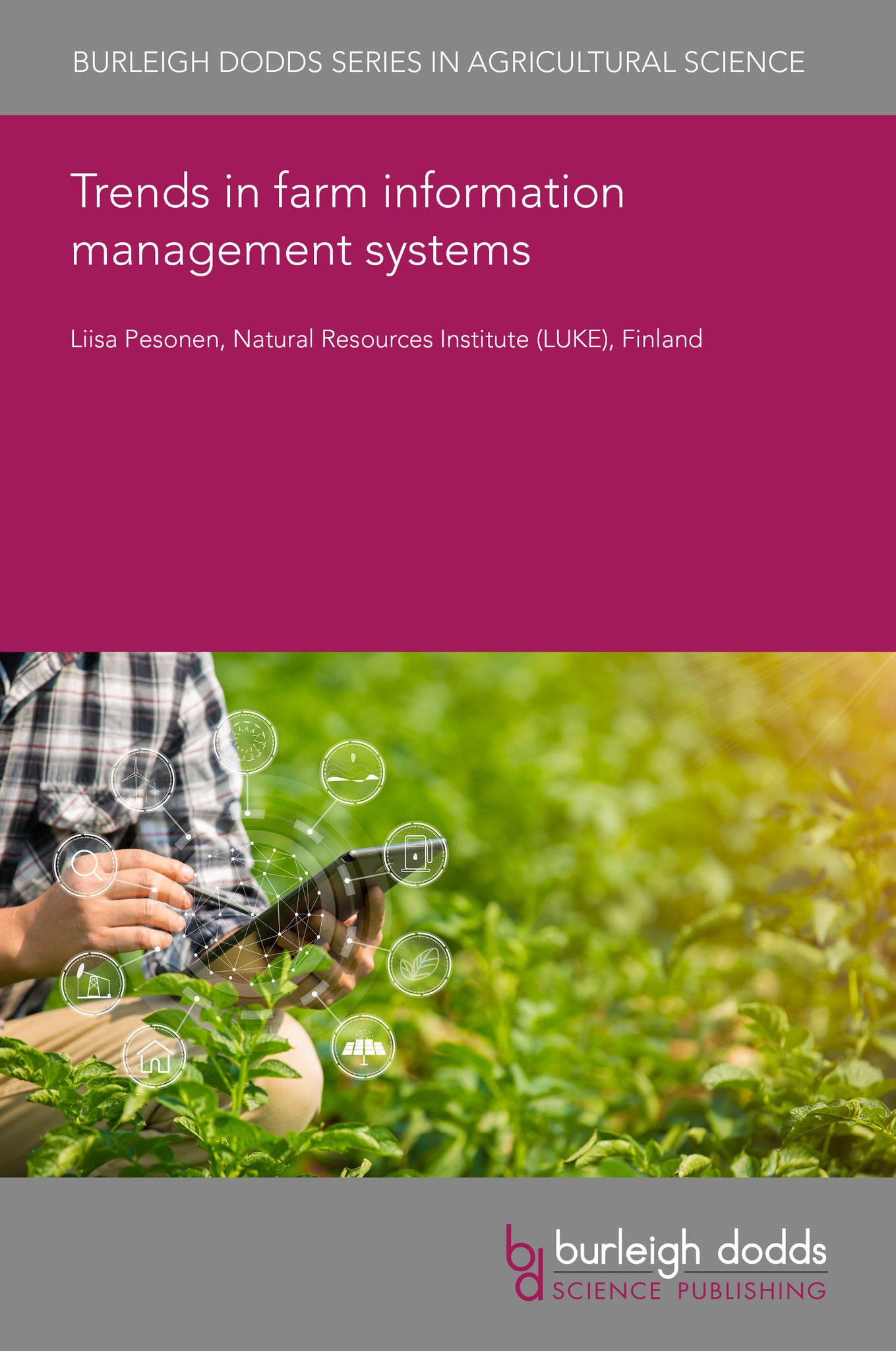We're sorry. An error has occurred
Please cancel or retry.
Trends in farm information management systems

Some error occured while loading the Quick View. Please close the Quick View and try reloading the page.
Couldn't load pickup availability
- Format:
-
23 April 2024

Farm managers must make numerous decisions every day. Farm management information systems (FMIS) can assist farmers in their daily collection of data, decision-making and reporting as well as in communication with stakeholders. After defining FMIS, this chapter defines functional requirements and standard modular components of FMIS. The chapter then reviews the evolution of FMIS and the role of technical architecture models which help to solve interoperability and customization challenges. The chapter concludes by reviewing future developments in digitalization and how these are affecting the evolution of FMISs.

TECHNOLOGY & ENGINEERING / Agriculture / Sustainable Agriculture, Agronomy and crop production, TECHNOLOGY & ENGINEERING / Agriculture / Agronomy / Crop Science, TECHNOLOGY & ENGINEERING / Imaging Systems, TECHNOLOGY & ENGINEERING / Data Transmission Systems / General, Agricultural science, Agricultural engineering and machinery, Sustainable agriculture

- 1 Introduction
- 2 Defining farm management information systems
- 3 Functional requirements and modular components of farm management information systems
- 4 The evolution of farm management information systems
- 5 Reference software architectures for farm management information systems
- 6 Conclusion and future trends
- 7 Where to look for further information
- 8 References



